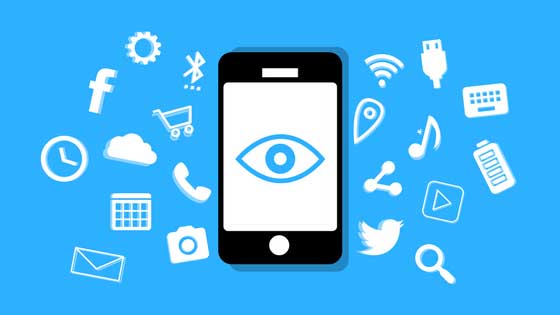Ever thought about chatting with a computer character that looks and talks like a real person? Or making cool videos with just words and a few clicks? If you have, you might want to know more about AI talking avatars. They’re changing how we talk and do things on the internet.
AI talking avatars are computer-made characters. They can talk based on what you type or say. They can also answer questions and follow commands using something called natural language processing (NLP). This is a part of artificial intelligence that helps machines understand and use human language. These avatars aren’t just pictures or cartoons. They’re like real people on the screen, with natural faces, movements, and feelings.
AI talking avatars have come a long way. They used to only talk if you had a recording or a person doing the voice. But now, they can turn any written words into speech. That means they don’t need pre-recorded sound or voice actors. This makes them super flexible and easy to use. They can speak in any language, dialect, or accent, and they fit into all kinds of situations. What’s cool is that these avatars can even chat back with users. This makes the experience more fun and personal. Let’s explore this idea a bit more!
The Technology Behind AI Talking Avatars
AI talking avatars use two important technologies: speech synthesis and natural language processing. Let’s break it down:
Speech Synthesis: This is like magic for turning written words into spoken words. It uses special algorithms to mimic how a human talk, including the throat and voice features. So, the computer can read text and make it sound like someone is talking.
Natural Language Processing (NLP): This is like teaching computers to understand and use human language. With NLP, the computer can analyze and create natural-sounding language. It uses algorithms that follow the patterns and meanings of human language.
In simple terms, these technologies work together to make AI talking avatars read and understand text and then turn it into lifelike speech.
Speech Synthesis
Let’s talk about the different ways computers make voices with speech synthesis.
Articulatory Synthesis: This tries to copy how humans make sounds when they talk. It imitates the whole speech production system.
Formant Synthesis: This copies the frequencies of speech or the way the vocal tract works. It’s like looking at the filter of the voice.
Concatenative Synthesis: This uses pieces of pre-recorded speech to make new words. It’s like putting together recorded parts to form complete sentences.
Now, there’s a newer way that’s becoming popular. It’s called neural network-based synthesis. This uses deep learning, kind of like how our brains work, to turn text or other things like pitch, emotion, or style into speech.
When it comes to natural language processing, it covers different areas like:
- Understanding Language: Figuring out what words mean.
- Generating Language: Creating natural-sounding words and sentences.
- Translation: Changing words from one language to another.
- Summarization: Making a short version of a big piece of writing.
- Dialogue: Having back-and-forths in language.
- Sentiment Analysis: Recognizing emotions in language.
These areas help computers do things like get information, answer questions, translate languages, summarize texts, chat with people, and even understand feelings from what’s said or written.
The Impact on Communication
AI talking avatars bring a lot of good things to how we communicate. They can speak in any language or accent, making communication easier for everyone. This is super helpful for people with hearing or speech challenges, as well as those who speak different languages.
These avatars can adjust to how the user is feeling or their personality. They can respond in different ways, like being funny or understanding, based on what the user likes. This makes talking with them feel more like chatting with a real person and adds a fun touch to the conversation.
Challenges and Considerations
Using AI talking avatars comes with its own set of challenges and things to think about. Let’s go over a few:
Ethical Questions
Who is responsible for these avatars? How do we make sure people’s privacy and data are safe? What about preventing the avatars from being used the wrong way? These are important questions to answer. For instance, people might use AI talking avatars to create fake videos that can damage someone’s reputation or spread false information.
Technical Limits
There are also technical issues to figure out. How do we make sure the avatars always speak and understand accurately? How do we deal with tricky things like understanding context or handling mistakes? Sometimes, these avatars might not get what the user is saying, which can be frustrating or even lead to wrong and harmful results.
Balancing the benefits of AI talking avatars with these challenges is important to make sure they are used in a positive and responsible way.
Real-world Examples
AI-talking avatars are already making waves in various industries. Many companies use them to create captivating videos for marketing, training, or explaining concepts. This platform lets users make AI videos just by writing a script and a few clicks. They use super-realistic AI avatars. L’Oréal used Synthesia to send personalized video messages to customers, leading to a 64% increase in click-through rate and a whopping 200% increase in sales.
DeepBrain offers a tool to make AI actors with custom avatars using text-to-video technology. Unilever used DeepBrain for employee training videos, resulting in a 50% reduction in production time and cost and a 90% increase in engagement and retention.
DeepBrain stands out for its variety of avatars, languages, and voices. It even lets you create avatars based on real or fictional characters using video footage of the model. These avatars are realistic and interactive. They can be used across different fields like education, entertainment, and healthcare. They’re making a big impact!
Future Trends
AI talking avatars are expected to evolve and improve in the future, as technology advances and the demand grows.
Advancements in Avatar Technology
As speech synthesis and natural language processing algorithms get better and learn from more data, AI talking avatars will step up their game. They’ll be able to use information from images, videos, and even emotions to generate speech. This means they’ll understand and respond in a more natural and human-like way.
In the future, AI talking avatars will become more like real conversational partners. They’ll be able to use slang, idioms, and jokes, making interactions feel even more natural and enjoyable. This improvement in language skills will make the avatars more relatable and fun to talk to.
Potential Integration in Various Industries
The future for AI talking avatars is full of possibilities in different areas. They’re not just for one thing. They will be used in many places to make things better and easier for everyone. Here are some examples:
Get ready to see AI-talking avatars in gaming, movies, and podcasts. They’ll add a new level of fun and interaction to these experiences.
AI talking avatars will also be used for good causes. In education, they could assist in teaching. For accessibility, they might help people with different needs communicate better. Overall, they have the potential to make our world more inclusive and helpful in various ways.
Conclusion
Talking avatars are a cool technology that is changing how we talk and connect online. They help us make and enjoy speech and language content in a way that feels natural and interesting.
These avatars started with just text, and now they can talk without needing pre-recorded voices. They’re super useful in jobs like virtual assistants, customer service, and teaching tools. They make communication better by being accessible and personal.
But there are some challenges, too. We need to think about the right way to use them and make sure they understand things correctly. Companies are already using these talking avatars, sharing stories of success and lessons.
In the future, these talking avatars will get even better and find new jobs in different areas as technology keeps improving.
































